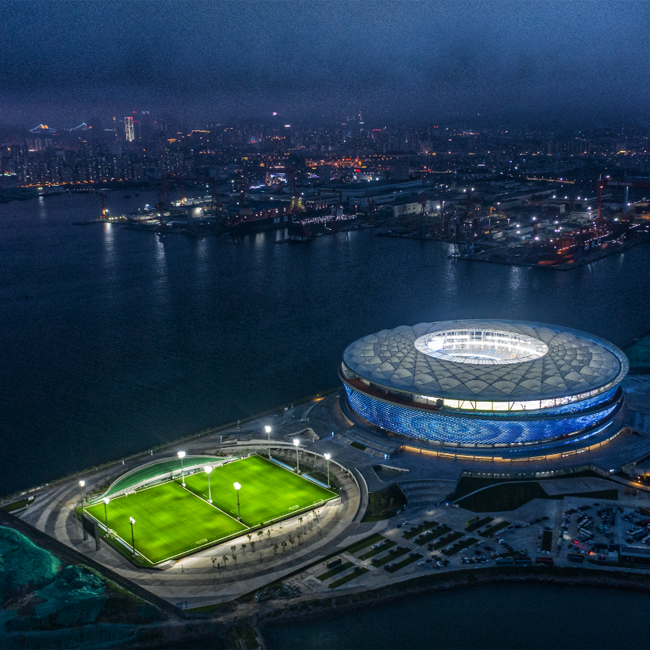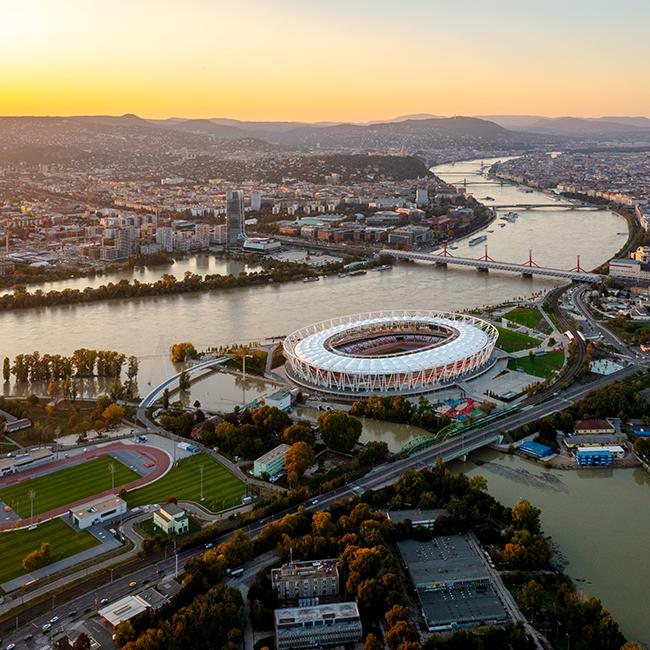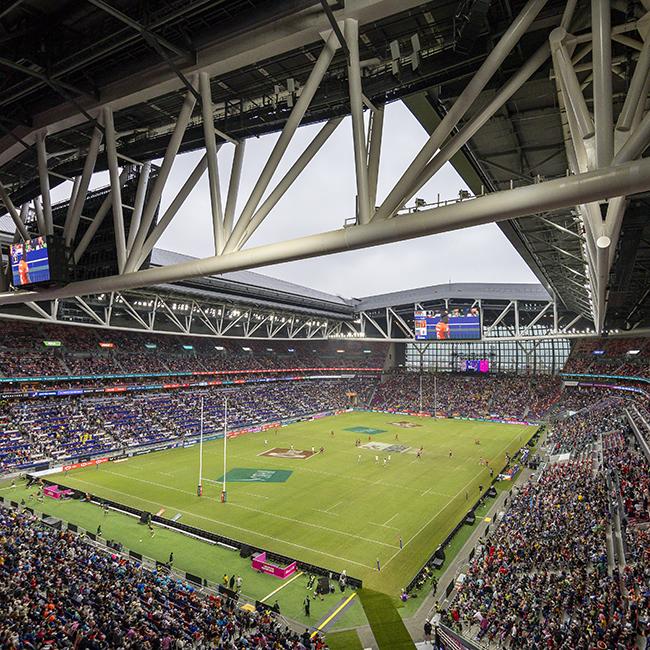Nestling into the slope
The stand seating displays a variety of shades of blue. Montigalà Stadium in Badalona, designed by AIA Salazar-Navarro architects, has created a community focus for the residents of the nearby residential area.
Badalona is an industrial town in Catalonia. It is situated about 10 kilometres north-east of Barcelona and extends along the Mediterranean coast.
Badalona’s municipal stadium is a building integrated within the slope and natural structure of the terrain, half-buried with practically no external presence and without façades or perimeter walls. It lies naturally within the topography of the terrain. This approach mitigates the building’s presence in the landscape and, at the same time, improves the complex’s thermal inertia.

Photo: Ariel Ramirez
Facts
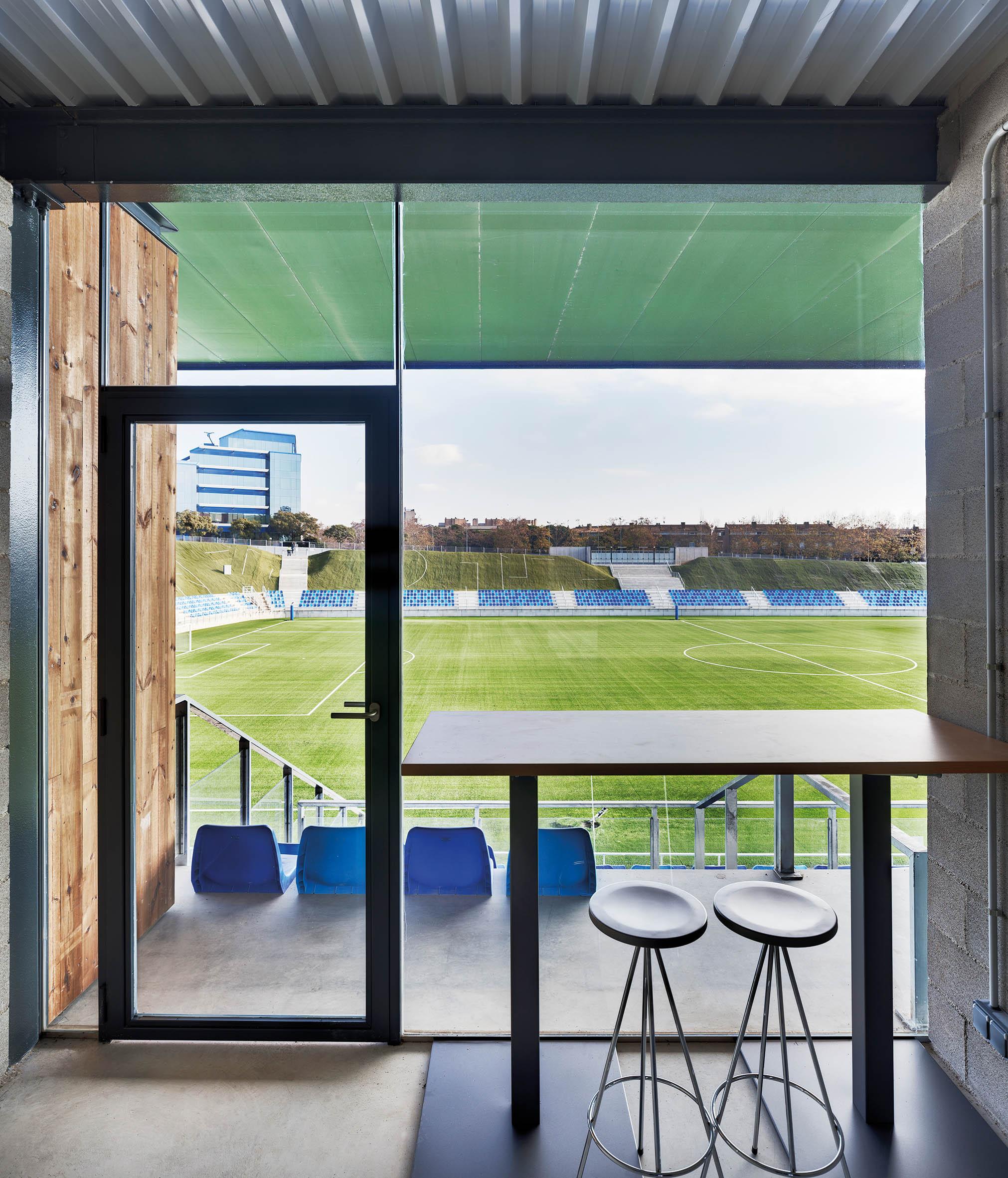
Photo: Ariel Ramirez
Location
Badalona, Spain
Client/Operator
City of Badalona
Architect
AIA Salazar Navarro
Plaça Sant Pere, 3
ES-08003 Barcelona
www.aia.cat
Leading architects
Albert Salazar,
Joan Carles Navarro
Design team members
Xavier Martínez i Tomeo,
Eduard Rodero López, Daniel Serra
Author
AIA Salazar Navarro
Photos
Ariel Ramirez
Official opening
January 2017
Construction costs
EUR 8.64 million
With its austerity, functional design and a combination of different materials, the building stands elegantly and with an integrated outward impression. The stadium has a capacity of 4,170 spectators – which can be extended to up to 12,000 – and a pitch measuring 105 × 68 m.
The concrete prefabricated structure helped to reduce the budget and ensure compliance with delivery deadlines. The canopy has been constructed with a spatial mesh clad with aluminium panels. The final result is a building with ease of construction and control, and high-quality finishes and system optimization.

Photo: Ariel Ramirez
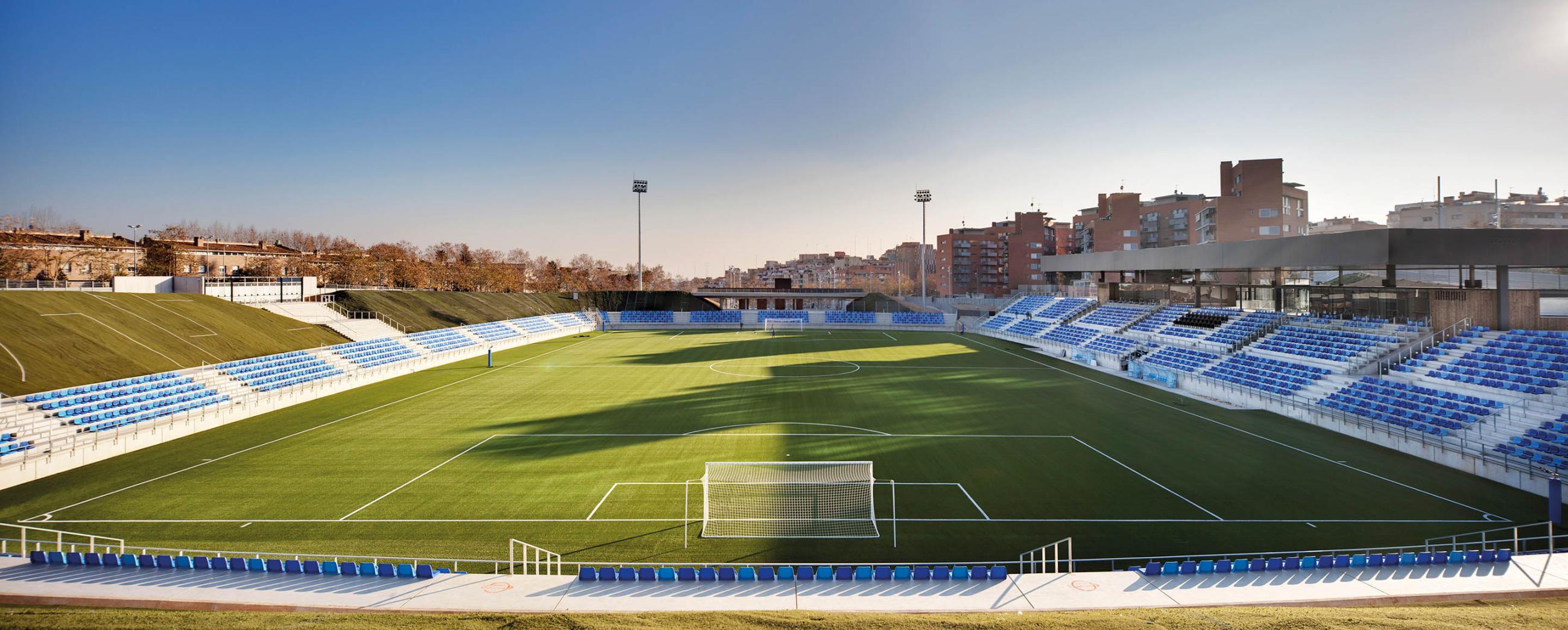
Photo: Ariel Ramirez
The design of the facility seeks to maximise efficiency and includes including energy-saving systems and energy-generating devices. The stadium’s average consumption is low. The functional areas (such as changing rooms, offices, services and technical rooms) are half-buried beneath the stands, with very stable thermal conditions and an optimal natural ventilation system.
